#naval salvage
Explore tagged Tumblr posts
Text
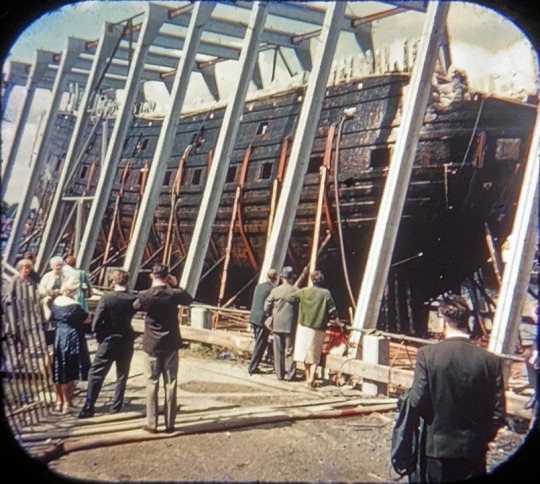
View-Master photo of the Vasa, shortly after her recovery in 1961.
#vasa#sweden#history#ship#salvage#marine archaeology#archaeology#stockholm#scandinavia#17th century#view-master#1961#swedish#warship#naval history#maritime history#maritime archaeology
12 notes
·
View notes
Text


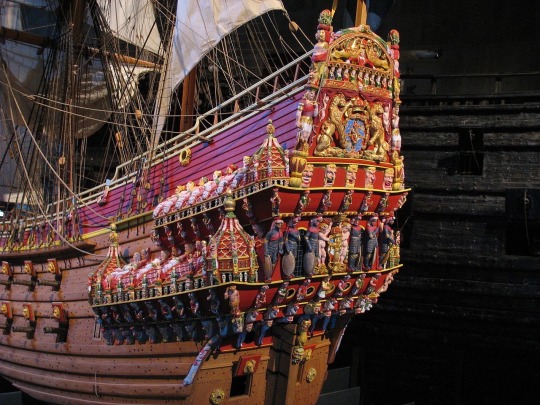
Swedish warship Vasa
built in the 1620s, sank on its first voyage in 1628, & salvaged in 1961 with a near full intact hull (last image is a model painted in what’s thought to be its original colors)
23 notes
·
View notes
Text

6 notes
·
View notes
Text







Stranded!
Over 100 years ago a submarine operating out of Mare Island Naval Shipyard beached outside of Humboldt Bay and the initial attempts by the Navy to refloat and tow her out to sea failed spectacularly. However, following the Navy’s failure, the salvage was turned over to a veteran logger who rejected the notion of fighting the waves and current involved in towing the 400-ton submarine back out to sea. Contrary to the Navy’s approach, he looked to drag the submarine across the South Spit of Humboldt Bay and relaunch it into the protected waters of the bay.
In late December 1916 Mare Island Naval Shipyard was hurriedly preparing the Protected Cruiser USS Milwaukee (C-21) For deployment on a rescue mission 250 miles up the coast off Eureka, California. The ship had been built ten years before at San Francisco’s Union Iron Works and now workers at Mare Island Naval Shipyard were busy attaching a half mile long 2 inch thick 24-ton steel cable to the ship and securing it to the after 8” gun turret. The cable had to be secured to the gun turret as no cleat or bollard on the ship could withstand the full 21,000 horsepower the ships triple expansion steam engines generated; however, as it turned out, that cable would be death of the ship.
Milwaukee was being urgently dispatched to salvage the submarine H-3 that was stranded on Samoa Beach across from the Northern California City of Eureka. Earlier, on the morning of December 14, submarine H-3 with her sister submarines H-1 and H-2 and their tender the monitor CHEYENNE were off the Northern California port of Eureka. They were to survey the harbor as a potential location for a submarine flotilla. At about 8:30 in the morning the captain of the H-3 was blinded by fog and not in visual contact with the other ships in the small fleet. His dead reckoning placed the submarine off the tiny opening into the harbor and he began inching the submarine eastward to search for the entrance. With his leadman taking constant readings a sleeper wave lifted the submarine thrusting it forward where it then grounded on a shoal. All astern was immediately ordered, but it was to no avail. Wave after wave drove the H-3 further ashore and turned her until she was parallel with the shoreline. The waves then began destroying her bridge and rolling her from side to side throwing the men inside against internal projections. Water pored through the bridge opening requiring that the hatch be secured as the men inside fought fires and chlorine gas caused by the seawater entering the battery compartment. With the hatch closed, the 25 men on the submarine were confined within their convulsing prison until help could arrive.
That help would be hours away as the nearest Coast Guard Station was located on the other side of the harbor entrance and rescuers had to travel around the entire harbor (about 25 miles) to get to the stranded sub. In the meantime, waves continued to push the submarine further towards the shore and into the breakers. By late afternoon a breach line had been attached to the conning tower of the submarine and the crew members began to be hauled across the 100 yards of breaking surf to the beach. As they were pulled to shore waves were rolling the submarine from side-to-side slackening and tightening the line causing the men to be dipped into the sea so often that when they reached shore most were half conscious. Despite the danger, all were saved by days end and were under care for any injuries suffered. With the rescue complete attention now shifted to salvaging the H-3.
For the next five days the CHEYENNE, a Coast Guard cutter, and two tugs tried in vain to haul the H-3 off the beach. The Navy then solicited bids from private salvagers. Those bids ranged from $18,000 to over $100,000. The low bidder was a man with many years logging experience who wanted to skid the sub a mile over the Samoa peninsula to the calm waters of the harbor.in the same manner he moved massive redwood trees. The bids were all rejected, and the Navy decided to do the job themselves with the powerful protected cruiser Milwaukee. The Milwaukee arrived on scene on January 9 and began the process of attaching the 24-ton tow line to the H-3. The plan was to tow the H-3 back to sea at high tide at 3:23 am on January 13. In the pitch black of the morning the Milwaukee took a strain on the line as she headed out to sea. She was assisted by the CHEYENNE and a small tug who were pulling her to starboard to counteract the effect of the wind, current and waves that were all pushing her to port. As the Milwaukee churned the ocean to froth the H-3 refused to budge. Then, the hawser from the Cheyenne parted. The remaining small tug was no longer able to hold the Milwaukee against the current by itself, and the waves and wind began swinging the Milwaukee to port anchored by the H-3. Urgent orders to cut the tow cable could not be completed in time and the Milwaukee swung in an arc around the H-3 until she too was grounded. It was going to be another long day for the Coast Guard rescue station. Although the immediate situation was not urgent, there were now 450 men stranded and in need of rescue through the surf.
The Milwaukee itself was not salvageable.
Eventually a temporary pier was built from shore out to the wreck and everything that could be carried off was taken and transported back to Mare Island for use on other ships. Meanwhile, the Navy, after originally deciding that the logger’s $18,000 bid could not possibly be executed, changed their mind and decided to retain him to haul the submarine over the sand peninsula to the harbor. True to his word, the logger hauled the H-3 into the harbor and refloated her. She was then taken to Mare Island Naval Shipyard for repairs.
Dennis Kelly
#vallejo#mare island#naval history#san francisco bay#us navy#Salmon Creek#Salvage#USS Milwaukee#Milwaukee#Coast Guard#Breeches Buoy#ocean
1 note
·
View note
Text

Andre Douglas
A Virginia native, Andre Douglas served in the U.S. Coast Guard as a naval architect and salvage engineer. Douglas later worked as an engineer for Johns Hopkins University Applied Physics Laboratory on NASA's DART mission to redirect an asteroid. https://go.nasa.gov/48FBlam
Make sure to follow us on Tumblr for your regular dose of space!
#NASA#astronaut#NASA Yearbook#graduation#Class of 2024#space#Inspiration#Black excellence#BlackExcellence365#DARTmission#asteroid#STEM
2K notes
·
View notes
Text
Zero Dawn Hydrosphere - Floodrage, Combat-Class Machine
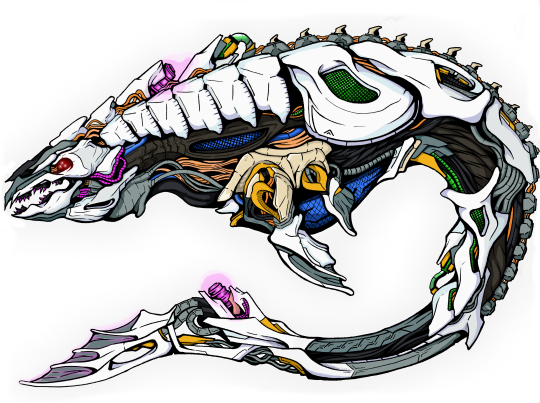

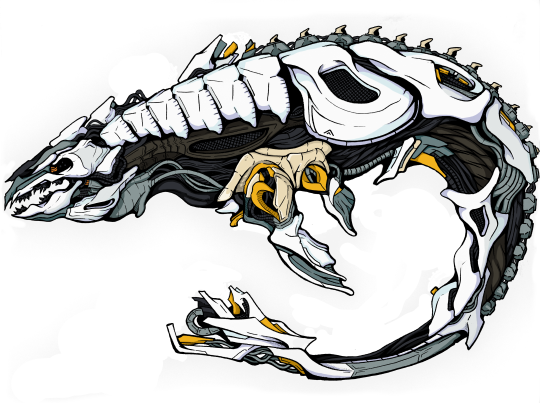
Floodrage - Lv 45 Combat-Class (Active, Deactivated, Parts Salvaged)
Origin - Cauldron Kappa
Length - 22m
Elements - Plasma, Purgewater, Acid
Range: Mid to South Pacific
The Floodrage is the most direct representation of HEPH’s ongoing threat escalation in the South Pacific. Specifically designed to counter and negate Quen Naval supremacy and inflict heavy damage on their fleets, the Floodrage exists to ruthlessly and efficiently sink ships.
The upper carapace is impervious to conventional tribal weaponry but can be pierced by sustained fire from Deathbringer guns. Vents under the carapace can exude acid and Purgewater to create environmental hazards in the water and the openings on each side of the lower jaw can spray high-pressure Purgewater to dampen elemental weaponry.
The Floodrage’s primary weapons are its plasma capabilities - the tail blade superheats to tear pieces off of ships as it passes under them, and inside the machine’s throat is a modified version of the Slaugtherspine’s plasma beam weapon.
Weak points: ventral Purgewater sac, plasma canisters, tail blade, relative lack of armor on underside.
Strategy: Extremely dangerous. Do not attempt to fight without ship-mounted weaponry or a Waterwing mount. Quen rope ballistae aimed under armor plates will tether and temporarily slow the machine, making weak spots on the underside easier to hit with conventional weapons. A Waterwing mount can maneuver around the Floodrage underwater.
Resources: Glowblast, Purgewater, Metalbite, Machine Muscle, Volatile Sludge, Crystal Braiding, Shards, Piercing Spike
Upgrade Resources: Sturdy Hardplate, Large Machine Core, Luminous Brainstem, Floodrage Machine Core, Floodrage Primary Nerve, Floodrage Machine Heart, Floodrage Tail Blade
#horizon#horizon machine#horizon zero dawn#horizon forbidden west#hzd#hfw#guerrilla games#aloy#hfw aloy#horizon fanart#my art#god I feel like such a dork did I overthink this thing#trying to fit it into existing and or prospective systems in the game was super fun to think about#hzd aloy
281 notes
·
View notes
Note
what's the equivalent of technicals in AS?
Salvaged Arcadia Y series + removed governors + chunks of 3inch plate steel welded to the chassis + reinforced welding mask/hard hat combo
If you live in a rural area, youve modified a plow blade into a crushing weapon, and youve put some illegal handmade solid slug rounds into your hunting shotgun.
If you're in an urban area, you've either fabricated what is essentially a handheld 1750s 12-pound naval canon. or you've got a backpack full good old fashioned molotovs.
121 notes
·
View notes
Text
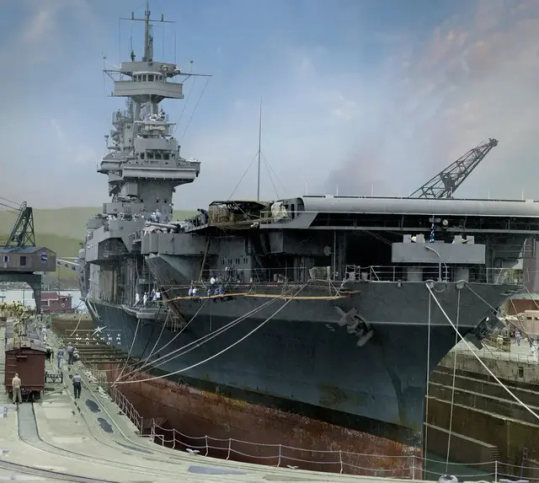

"USS YORKTOWN (CV-5) in Dry Dock # 1 at the Pearl Harbor Navy Yard, receiving urgent repairs for damage received in the Battle of Coral Sea. She left Pearl Harbor the next day to participate in the Battle of Midway. USS WEST VIRGINIA (BB-48), sunk in the December 7, 1941 Japanese air attack, is being salvaged in the left distance."
Date: May 29, 1942
U.S. Naval History and Heritage Command: 80-G-13065
Colorized by Steven Walker: link
#USS YORKTOWN (CV-6)#USS YORKTOWN#Yorktown Class#Aircraft Carrier#Warship#Ship#United States Navy#U.S. Navy#US Navy#USN#Navy#USS WEST VIRGINIA (BB-48)#USS WEST VIRGINIA#Colorado Class#Dreadnought#Battleship#Pearl Harbor Navy Yard#Pearl Harbor#Hawaii#Drydock#Dry Dock#May#1942#my post
91 notes
·
View notes
Text

"Ensign Mac. J. Roebuck standing by his wrecked 'Kingfisher' about August 1942. He was piloting the plane when it crashed on Mount Buxton, Calvert Island, British Columbia, on 20 August 1942, and later assisted in the salvaging of it's instruments and engine. The plane's airframe was recovered by a Royal Canadian air force salvage team in 1964. After being reconstructed by the Vought Aeronautics' quarter century club, the OS2U was placed on display aboard the USS NORTH CAROLINA (BB-55) memorial at Wilmington, North Carolina, and was dedicated on 25 June 1971."
Date: late August 1942
Naval History and Heritage Command: NH 73760
#Vought OS2U Kingfisher#OS2U#Floatplane#Observation Plane#Seaplane#Spotter Plane#Aircraft#Airplane#World War II#World War 2#WWII#WW2#WWII History#History#Military History#wreck#Mount Buxton#Calvert Island#British Columbia#Canada#August#1942#my post
42 notes
·
View notes
Text
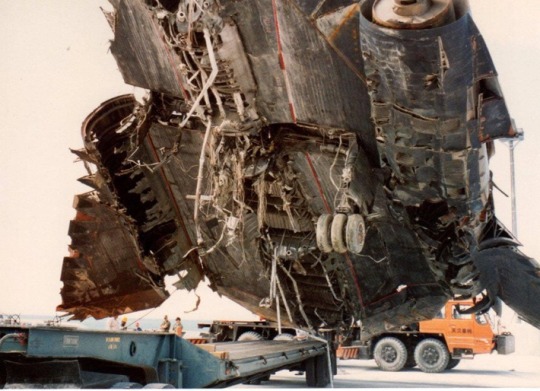
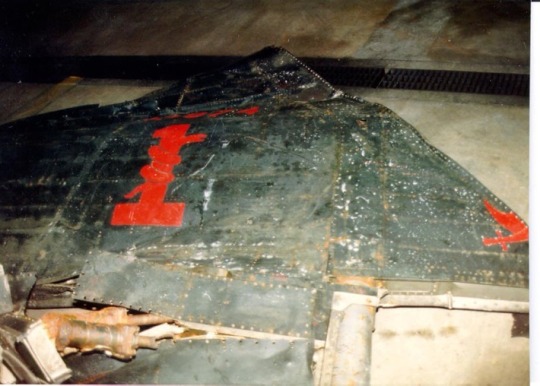


SR-71 #974 sleeps below the fish’s in the deepest part of the ocean the Mariana Trench there will not be any communist spying in that area.
Since the end of the Cold War, more information has come to light, with many official documents declassified. My friend Paul Crickmore sent me the following email last year with some interesting information.
I just read the piece you wrote about the loss of #974 a couple of days ago and thought you’d like a ‘sneaky-peek’ at part of the piece that’ll appear in the new book covering the subject…
“Side‑scanning sonar imaging of the crash site took place on 29 and 30 April, and it was not long before the debris field of ’974 was located. The 280ft‑long salvage vessel USS Beaufort was dispatched to lift the wreckage with its 10‑ and 15‑ton cranes, fitted on the bow and stern, respectively, and to find the sensors and defensive systems (Coincidently, the ship was built by Brooke Marine, in the author’s home town of Lowestoft, Suffolk).
Due to the proximity of the communist New People’s Army, a number of Navy SEALs were on board to provide protection to the divers and crew.
One morning during the search, an order for General Quarters was sounded at 0400 hours. Crew members rushed to their action stations in readiness for an immediate confrontation. They saw a large number of small vessels (which had been detected on the Beaufort’s radar) making for the ship.
Tension mounted until it was discovered that the would‑be attackers were fishing boats that had come towards the bright lights of the naval vessel because a very large shoal of fish had congregated around it. 🐠
When ’974 impacted the water inverted both engines, the main undercarriage and the aircraft’s sensors smashed through its upper surfaces.
They were scattered on the ocean floor at varying distances away from the main wreckage field. On the evening of 1 May, wire hawsers were attached to one of the J58 engines. The late evening movements dislodged the TEB tank and caused a small leak, which released tiny amounts of the chemical throughout the night.
TEB CAUSED GREEN PUFFS
As the volatile chemical bubbled to the surface, it mixed with ambient air and exploded in small green puffs. The ‘magic’ of the ‘Yankee’ engineers caused quite a stir among the native fishermen who saw the eerie ‘TEB‑bubble show’. The next day both engines were lifted and brought aboard the Beaufort’s fantail, and two days later, many of the sensors were also recovered. When the ship’s crew attempted to lift the main section of the aircraft, the crane operator found that the large delta‑shaped wing planform greatly exceeded the lifting capacity of his crane, and the wreckage refused to budge an inch. A yard derrick was sent from Subic Bay, and the forward fuselage section was recovered on 7 May, while the main structure was lifted aboard the Beaufort’s fantail the following day. The black wreckage was a sad end for a once‑proud airplane, despite Dan’s skillful ( Dan House, the Pilot) and valiant efforts to save it.”
This post is by Linda Sheffield
With Paul Crickmore
@Habubrats71 via X
#sr 71#sr71#sr 71 blackbird#aircraft#usaf#lockheed aviation#skunkworks#aviation#mach3+#habu#reconnaissance#cold war aircraft
22 notes
·
View notes
Text

Captain's Log Day 52 of Zephyr, 1338 AE
"I am gravely concerned, and thus I have decided to finally begin a written log of events aboard ship. To any who may stumble across this log, my name is Yulton; Captain of The Paradigm. Her crew and I are chartered out of Lion's Arch where we faithfully serve the Commodore and Captain's Council; for the betterment of all Tyria.
Our vessel is responsible for a variety of tasks. In service to our benefactors we have participated in naval actions, escorted passengers to distant destinations, delivered valuable cargo to remote outposts, salvaged maritime wrecks and rescued marooned sailors. Indeed we have performed more functions than one can notate in a single sitting. It is a life of great adventure, and I cherish it dearly.
Three days ago the Paradigm departed Lion's Arch on a mission of humanitarian aid. Our commission required that a cargo of vital supplies be delivered to a budding port-city off the coast of Maguuma. New Libertalia it is called, a verdant stronghold on the coast of leviathan filled waters. It was more than once that the crew and I had to deter such vile beasts from attacking our ship. I do not look forward to sailing through the channel again, but we must.
It has come to my attention that one of the local leaders, a Captain Blacksprit; has killed three men. This was done in a most gruesome and barbaric fashion, the details of which I shan't describe. It would appear that their public executions were the result of some form of sabotage. What kind I cannot say. Whether they received trial or not, I do not know.
Regardless of what they did, they were men. They were not animals and they most certainly did not deserve to be slaughtered in such an abhorrent manner. I have many words, but none of them will undo what has been done. What remains, is what to do next.
I can hear the bells in the square, it is a summons. Someone is meeting for something. I shall go and see, and if this Captain Blacksprit is there? What then? Shall I be bold enough to speak the truth? Knowing it may cost me my life? I pray I can find the strength to do what is right, regardless of the cost.
Signed, Yulton Captain, Commanding
11 notes
·
View notes
Text

The U.S. Navy aircraft carrier USS Yorktown (CV-5) in Dry Dock No. 1 at the Pearl Harbor Naval Shipyard, 29 May 1942, receiving repairs for damage received in the Battle of Coral Sea. USS West Virginia (BB-48) is being salvaged in the distance
81 notes
·
View notes
Text
Pick a name for a character!
CHARACTER BIO: Character is a spacewalker living on a Jovian asteroid. Revolution engulfed their planet, and a close childhood friend offered them a position in the asteroid's newly-established civil naval service. Back on Mars, they were an indentured non-citizen worker, suddenly accused of murdering someone who never existed, and freed only by the chaos of civil war. They work with their crew to repair statites, guide researchers, and salvage Mars' now-derelict refinery ships - deserted by the Martian coastguard, but not by corporate security. In the course of their story, they deal with the shaky political situation on the ex-Martian asteroid, try to prevent a horror from repeating, and make first contact with alien life.
Poll options chosen by my followers:
33 notes
·
View notes
Text
This morning, a Ukrainian Neptun antiship missile hit a the world's oldest active duty naval vessel, the salvage ship Kommuna, at the Russian Naval docks in Hollandiia Bay, Russian occupied Sevastopol. 21 April 2024
48 notes
·
View notes
Text
Liveblogging the Aubreyad: Book 4, The Mauritius Command (pt 1)
So at the end of the last book, Jack closes things out by looking forward to the paradise he will finally reach when he gets home with his financial solvency and his soon-to-be wife, and in typical unromantic fashion, the next book opens with a lovingly detailed description of just how not-paradise the situation actually is.
Some time has elapsed. Jack is married, owns a romantical little cottage with a not very thriving kitchen garden, and has twin daughters. His mother-in-law has also bankrupted herself and now lives with them, as does his niece Cecelia, since his wife's sister (also Cecelia) cannot actually look after her child, since she was hastily married to a soldier who had, it is implied, knocked her up, and is off camp-following said soldier. Mrs. Williams in her greed also gambled away Sophie's dowry on the investment scheme that broke her, so Sophie is also broke. They are living on Jack's half-pay and have to be very frugal. Jack has not been able to get a ship and has been assigned instead to the unglamorous, not particularly remunerative Sea Fencibles, a kind of militia in fishing boats.
But, he is not under threat of arrest for debt, so at least technically he is doing better than he has been for the last two books.
And he is in tolerably cheerful spirits despite all of it, because after all, he does have his wife and his cottage, and his new habit of mathematics has extended to becoming quite a keen hand at astronomy, including grinding his own telescopes, and he has a little observatory in the yard that he built himself from copper salvaged from old ship hulls (which the dockyard let him have from pity).
He mostly uses this observatory to look at the ships in the harbor, as Stephen finds out when he shows up to visit.
But better things are coming, as Stephen's visit presages. Their first inkling is when a message arrives from Lady Clonfert, the wife of a fellow Naval captain, asking Jack if he can give her a lift to the Cape. Stephen is incredibly annoyed at this for some reason, while everyone else is baffled.
Stephen drags Jack outside to talk in private and goes off on a tirade about lack of discretion and how terrible it is from an intelligence perspective, and through this Jack gradually comes to understand that Stephen has managed, for intelligence reasons, to get Jack a ship in fact, and this fact makes Jack so irrepressibly happy despite the fact that he understands just why Stephen is angry and that Stephen is justified to be angry that Stephen eventually has to stop his tirade and be like.... now we have to wait out here until the official messenger arrives, and Jack is like why and Stephen is like because you are so obviously delighted that there is no way you can keep a secret about this, and jack is like... i can be quiet and stephen is like no. you cannot.
Sophie does not know about Stephen's role in intelligence, and cannot know. No one in the family can know. So they stay outside, huddled in Jack's observatory as it rains, until the messenger shows up with Jack's orders.
It's a complicated mission and Jack doesn't get to take any of his people. (He has had to dismiss Killick and Bonden; he couldn't afford to pay them as servants.) But he has command of HMS Boadicea, a 38-gun frigate, to repair to the Indian Ocean, there to command a squadron to resist four new French frigates that have been despatched to the Ile de France (Mauritius), and have been playing havoc with British commercial shipping in the area. It involves playing the role of a commodore, which is not a promotion for Jack but is a great deal of prestige and in fact should not come to one of his seniority except by Stephen's intervention-- because Stephen has learned that if he is to do intelligence work, he is much better off with Jack nearby, and intelligence work he has to do, and delicate stuff at that: they aim to take Mauritius and La Reunion away from the French, no small undertaking.
Jack needs to borrow money from Stephen to outfit himself for this voyage, which gives us this fantastic, extremely-typical line as he brings up the topic:
“Money, is it?" said Stephen, who had been thinking about lemurs.
Jack resolves to leave that very afternoon, and sail that night. Sophie is glad he has a ship but dismayed at the suddenness, and contrives to convince him to stay at home one more night. This becomes plot-significant later but as this is Stephen's POV it is glossed-over because he does not care what they get up to.
He gets to sea, and contrives to avoid giving Lady Clonfert a ride; she is very pretty, and he had noticed Sophie seemed a little jealous and uneasy, and besides it eventually comes out that he does not like Lord Clonfert for extremely good reasons, and he is uneasy about the whole thing.
He does not contrive to avoid the politico they must bring on board to be ready to become the governor of Mauritus if they succeed in taking it. He seems okayish, and Stephen likes him fine; his name is Farquhar and he has a background in law.
On the voyage down the Boadicea manages to take a prize, a French corvette that turns out to be the former British frigate Hyaena, and to also get salvage on the merchantman she had recently taken, a Guineaman, which Jack managed to delay long enough that 24h had elapsed so she was salvage instead of a rescue. So there's some money, but better still, he manages to send away the incompetent First Lieutenant he'd been saddled with as prize commander, and all the awkward buggers and hard cases as prize crews, and a really shitty midshipman to prize-command the recaptured merchant, and then on top of it he presses a bunch of right seamen out of the recaptured merchantman to replace them all with. So off he goes with a much, much better crew in his ship, for a very long voyage; right away he promotes the most deserving of his master's mates to acting lieutenant, another fellow like Tom Pullings with no powerful friends, who would never have got a step otherwise, thereby ensuring the man's lasting devotion and good service for life.
With his crew squared away, they spend the long voyage getting up to snuff on their sailing and gunnery. Jack also takes his newfound love of mathematics to the midshipmen's berth, educating them himself, and discovers that one of them, Dick Richardson (Spotted Dick because of his pimples, alas) is very mathematically gifted. This means Aubrey has to study even harder to stay ahead of him.
They finally arrive at Cape Town: he is under the authority of Admiral Bertie, and is to command, as a commodore, a squadron of assorted ships. Sirius, under a Captain Pym; Nereide under a Captain Corbett; the sloop Otter under Captain (master and commander, not a psot captain) Lord Clonfert; and finally an ancient and barely-seaworthy Raisonable as a flagship, a 64-gunner that can't actually do much.
(The subsequent plot of the novel takes a great deal from the real historical events of the Mauritius Campaign of 1809-11, so if one were inclined to look at maps it would likely be useful to start there.)
Ashore, Stephen meets the surgeon of the Otter, who passes out drunk into his arms. (The man, McAdam, is an old acquaintance, a specialist in diseases of the mind.) Trying to find any Otters to take him home, he runs into none other than Bonden. Bonden and Killick came down in the Nereide to try to catch up with Aubrey, hearing he was afloat again. But Stephen notices Bonden is moving stiffly, and is astonished to learn he was recently given the stunningly harsh punishment of fifty lashes, because a piece of brasswork wasn't shiny enough. Bonden, a steady and sober lifelong seaman, has never been flogged before in his life. He won't complain, but he does ask Stephen to ensure that Jack gets him and Killick as transfers, concerned that Corbett won't let them go as he's so short-handed. Nereide is on the brink of mutiny and everyone aboard who can do so deserts given any opportunity.
“What I mean is, that in the first place me and Killick and the rest want to get back to our own captain: and in the second, we want to get out before things turn nasty. And at the gait they are going now--well, I shouldn't give much for Captain Corbett's life, nor some of his officers, come an action, or even maybe a dirty night with no moon; and we want no part in it.”
As for the others-- Clonfert resents that Jack didn't bring his wife. Clonfert also is apparently aware that he behaved very, very shabbily to Jack when they were both in the Andromeda, letting Jack do all the hard dangerous work of a cutting-out expedition and then taking credit afterwards himself; Jack remembers the incident but does not hold a grudge and assumes he simply didn't know what really happened, but Clonfert, it is clear, very much knows he behaved badly and expects Jack to resent it, having underestimated just how good-natured Jack really is. And he resents that Jack has since that time advanced more in his career, Clonfert having lost seniority in a disciplinary situation of some kind. But at least Clonfert's ship is a reasonably happy one and his people like him and will work for him.
Pym is good-natured but not very bright and his ship is in poor condition through sheer age and use; he is willing, but there's not a lot Sirius can do.
They put to sea, under orders to find and destroy the French frigates. Meanwhile Stephen goes to La Reunion to liase with agents there. From Stephen's intelligence they discern that if they collaborate with the British soldiers stationed on Rodriguez, they could assault La Reunion and take its batteries, and then take the ships in its harbor St. Paul, which include two recently-captured British Indiamen. So they go to Rodriguez to persuade the Lt. Col. commanding the soldiers of the possiblity of executing this plan. Lt. Col. Keating is in fact admirably keen to join in with this daring plan, and they immediately begin to make arrangements.
Clonfert and Corbett have an ugly public disagreement over where the best landing-place on La Reunion is, both of them having extensive local knowledge. Jack checks Clonfert over it-- it's unprofessional to argue like that and Corbett is the senior officer-- and shortly thereafter Stephen is called in to consult with Otter's eccentric surgeon McAdam. Clonfert has an inexplicable, painful recurring condition where he has fits, possibly psychosomatic but severe regardless, and he is taken by one after having been checked by Aubrey. McAdam mentions that Clonfert is mildly obsessed with Aubrey and very frequently discusses him.
In the end it is decided to use Corbett's landing place for the soldiers, so all the soldiers crowd onto Nereiad and the squadron sets off. They arrive in two days. Clonfert volunteers to lead the detachment of seamen, collected from all the ships to pad out the numbers of soldiers and Marines.
The Nereiad goes alone, while the rest of the squadron goes around to the island's main harbor slowly. Jack finds it very hard to give orders but not participate. It is his first taste of admiral-like responsibility and he does not care for it.
Stephen was already up, sitting there clean, shaven and respectably dressed under the swinging lamp. He said, "There is the strange look about you, brother?" "A strange feeling, too," said Jack. "Do you know, Stephen, that in about one hour's time the dust will begin to fly, and what I shall do is just lie there in the road and give orders while the other men do the work? It has never happened to me before, and I don't relish it, I find. Though to be sure, Sophie would approve." "She would also beg you to drink your coffee while it is hot: and she would be in the right of it. There are few things more discouraging to the mind that likes to believe it is master in its own house, than the unquestionable effect of a full belly. Allow me to pour you a cup.”
The landing parties do their work, take first one battery, then the next, then the French ships in the harbor (including two captured British Indiamen) begin to fire on the Englishmen ashore, but the English turn one of the batteries they have taken on them, and then the second, the Union Jack running up above the taken batteries. The British ships at sea cannot fire at the French, for fear of hitting their own people, so the squadron takes fire to which it cannot reply.
But the landing parties ashore have largely taken the town, and now it is only the French ships still firing. The British squadron stand in and engage them, and the ships surrender. Success: they have taken the harbor. They don't expect to hold it, not for long anyway, but the ships in the harbor are all theirs now, and they can destroy all the military stores and government records at their leisure.
Clonfert has done well but Jack is slightly worried that the man's motives are to one-up Corbett rather than get the job done in the most effective way. They secure the town, and Clonfert overzealously burns some things that turn out to have been valuable cargo from the Indiamen, which upsets him horribly.
But the French column enroute to retake the harbor does not arrive. The French commander has committed suicide, the rest do not wish to fight. St. Paul is safe for now.
Jack rewards Corbett, giving him the French frigate they captured to sail back to the Cape with their despatches, and then in turn promotes Clonfert to post captain from commander, and gives him Nereide, and gives Clonfert's first lieutenant the Otter. Clonfert is weirdly conflicted at having been made post by Aubrey, since he was once senior to him and still has this apparent one-sided rivalry going in his mind, of which Jack remains completely unaware.
“He is an odd fish, Clonfert," said Jack to Stephen, between two peaceful duets. "You might almost think I had done him an injury, giving him his step." "You did so advisedly, not from any sudden whim? It is the real expression of your sense of his deserts, and not an alms? He should in fact be made a post-captain?" "Why," said Jack, "it is rather a case of faute de mieux, as you would say. I should not like to have to rely upon him at all times; but one of them had to go, and he is a better captain than Corbett.”
Corbett's disaffected crew is reorganized into other ships, and Jack now no longer has to worry about a mutiny in his squadron; the entire thing was just to both do the right thing by his subordinates and also get Corbett out of the unhappy Nereiad.
Now what is needed is more soldiers for another decisive stroke to secure the whole island, but back at the Cape the higher command of soldiers will not stir without orders from on high, and there are no communications from on high. So they will not be able to make good their advantages.
I'll pause here, somehow this has gotten long. Well, I'm trying to write it while traveling and it turns out this takes concentration. But part 2 is coming and it has the arrival of a beloved recurring character so brace yourself.
13 notes
·
View notes
Note
would LOVE to hear about the ned quits the navy one 👀👀
hi kay! thank you for the ask!
it's more of a nebulous, 100+ bullet point listicle of an au than an actual wip at this point, but i'm more than happy to yap on about it:
it's essentially a ned-centric post-rescue joplittle au in which ross ex machina saves a handful of the expedition survivors (including some of the mutineers). it mostly follows the show's timeline, with some self-indulgent exceptions regarding canonical character death (jfj doesn't die, for instance. he and francis had their 'wedding night' scene, but francis couldn't go through with it, and jfj is not quite as scorbutic in this au).
aboard the investigator, ned learns that jopson survived being abandoned, and has to wrestle with his conscience. he tries apologizing to jops, only to be soundly and coldly rebuffed in the attempt. this shakes ned to his core, and he questions the purpose of his own survival. things only get worse for his mental state when he overhears francis tell jcr that he feels personally responsible for what happened to the men after he got captured by the mutineers.
this makes ned question his entire naval career, and what it means to be a good man. after some soul searching, and further developments once they reach ye olde england (including an inquest by the admiralty; and sending francis money on the condition of anonymity to help pay for jops' recovery), ned decides to quit the navy and start a shipping venture of his own with the help of his (legendary) brother, james, and some rich benefactors thanks to his connection to lady jane.
things go moderately well. james invites ned to come live with him for a spell, their business grows lucrative, and ned slowly relearns what it means to be, if not happy, then at least content. until a very angry jops shows up on his doorstep one day and goes, "so. it's come to my attention that it's not captain crozier, but you i have to thank for funding my recovery". this leads to them having it out in the foyer, with jops angrily telling ned he doesn't need his charity, and ned replying even more angrily that it's not charity; but he had to do things behind jops' back because he knew jops would never accept his help otherwise.
eventually, jops asks him why he's so deadset on helping, and ned - without thinking - blurts out: “my heart stopped beating the day i left you behind, and only restarted when i learned that you’d survived. but by the time i could tell you so, however, you already hated me. and now, all i have left is my ability to care for you from afar.”
they're both stunned into silence by the admission. ned, in a near panic, hastily tries to salvage what little dignity he has left by vowing to stay away from jops forever if that's what he truly wants.
but instead of turning away in disgust, jops breaks down right in front of ned and simply says, "it would've been easier for both of us if only i was capable of hating you."
smth smth emotional catharsis. and then james little - gay legend that he is - walks in on them having their heart-to-heart, takes one look at jops and goes, "oh, this explains so much about why ned's Been Like This™ since he got back."
cue happy ending, applause, etc.
and yeah, that's basically ned quits the navy in a nutshell! i'd be more than happy to share the full bullet point list on here for anyone who'd like to know more.
once again kay, thank you for picking my guilty pleasure au to ask about! i hope you enjoyed learning more about it 💖
11 notes
·
View notes